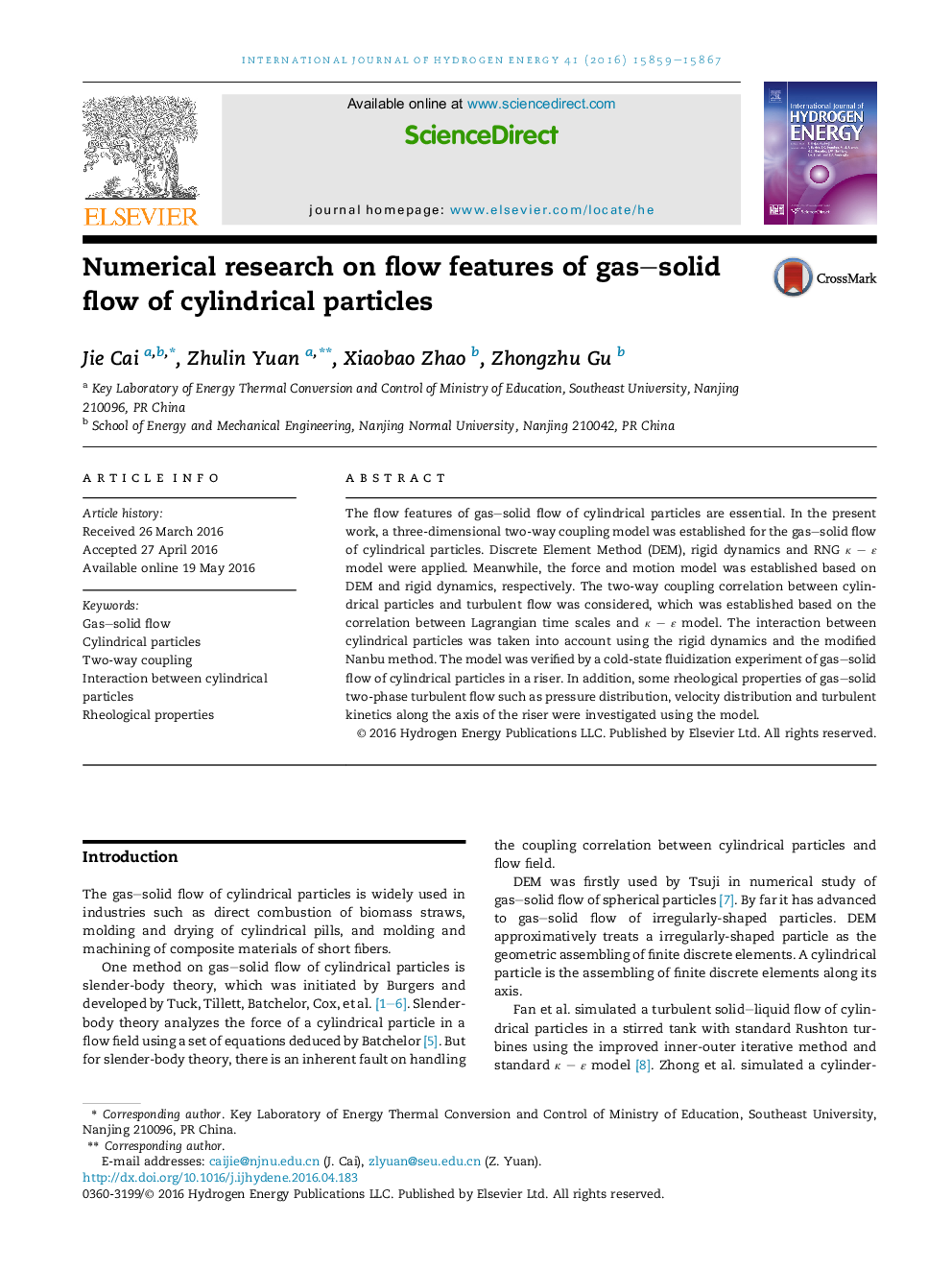| Article ID | Journal | Published Year | Pages | File Type |
|---|---|---|---|---|
| 1270314 | International Journal of Hydrogen Energy | 2016 | 9 Pages |
•A three-dimensional two-way coupling model of gas–solid flow of cylindrical particles was established according to DEM, rigid dynamics, RNG κ – ε model.•The three-dimensional interaction between cylindrical particles was established using rigid dynamics and modified Nanbu method.•Some rheological properties of gas–solid two-phase turbulent flow such as pressure distribution, velocity distribution and turbulent kinetics along the axis of the riser were obtained.
The flow features of gas–solid flow of cylindrical particles are essential. In the present work, a three-dimensional two-way coupling model was established for the gas–solid flow of cylindrical particles. Discrete Element Method (DEM), rigid dynamics and RNG κ – ε model were applied. Meanwhile, the force and motion model was established based on DEM and rigid dynamics, respectively. The two-way coupling correlation between cylindrical particles and turbulent flow was considered, which was established based on the correlation between Lagrangian time scales and κ – ε model. The interaction between cylindrical particles was taken into account using the rigid dynamics and the modified Nanbu method. The model was verified by a cold-state fluidization experiment of gas–solid flow of cylindrical particles in a riser. In addition, some rheological properties of gas–solid two-phase turbulent flow such as pressure distribution, velocity distribution and turbulent kinetics along the axis of the riser were investigated using the model.
Graphical abstractFigure optionsDownload full-size imageDownload as PowerPoint slide
